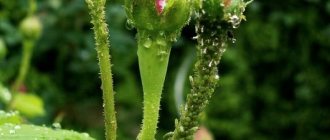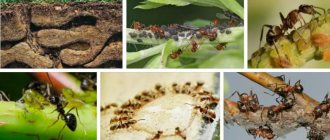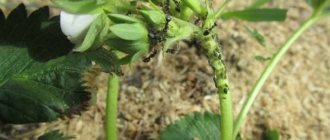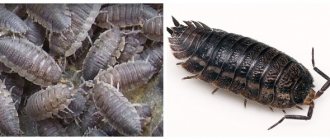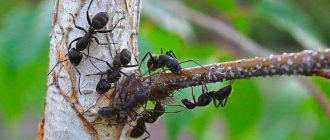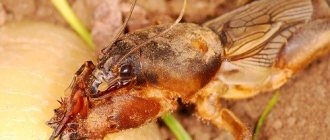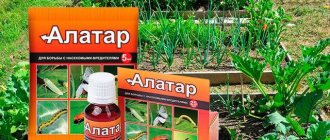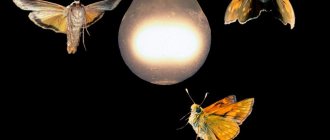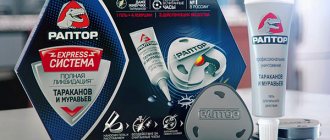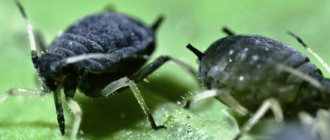The defeat of cultivated plants by various diseases and their consumption by insect pests leads to poor fertility. As a result, yields are significantly reduced, and agricultural enterprises suffer losses. To prevent this situation, chemical plant protection products are used. There are a large number of drugs intended for certain conditions and aimed at reducing the impact of various parasites on plants.
Many novice workers in the agricultural sector often wonder what these drugs are: herbicides, pesticides, fungicides, insecticides, and what the difference is between them. The fact is that pesticides are the general name for all drugs used to protect cultivated plants from various parasites, insects, and weeds. Therefore, there are no differences between pesticides and herbicides as such - these are different names for drugs used to protect agricultural, garden, and garden plants.
Chemical plant protection products are classified into the following categories:
- fungicides – used to protect against fungal diseases;
- insecticides – protect plants from insect pests;
- herbicides – designed to kill weeds.
The classification of plant protection products against pests is also carried out according to the composition of the drugs used. They may consist of:
- inorganic chemical compounds;
- organic substances;
- components of biological origin.
Why are insecticides used in agriculture?
Insecticides are actively used in large and private farms for the prevention and active control of pests. The drugs have a detrimental effect on parasites and insects that destroy the harvest of cultivated plants and spoil decorative plantings. For the most part, chemicals affect not only the adult insect, but also the larvae and eggs. Before using one of the store-bought products, you need to make sure that it is suitable for killing a particular insect, and then determine the exact treatment area and dosage. By acting wisely, you can protect the crop without risk to plants, animals and humans.
Classification of drugs
Insecticides are chemical means of controlling insect pests, destroying them on the ground, in the soil, and on plants.
Wherever there is a potential threat to gardening and gardening.
Insecticidal preparations are divided according to the type of effect on living organisms into 8 main groups:
- universal (killing all pests);
- acaricides (anti-mite);
- insectoacaricides (destroy a number of insects and mites that require special tactics to combat them);
- larvicides (kill larvae and caterpillars);
- aphicides (destroy aphids);
- ovicides (affect the pest in the embryo, that is, in the egg);
- nematicides (drugs for roundworms: unfortunately, they kill earthworms as effectively as soil nematodes);
- repellents (repellent substances, buy them for prevention).
Varieties of popular insecticides
Having figured out which drugs are insecticides, all that remains is to decide on the purpose of use. There are highly specialized remedies against specific insects, and there are preparations for prevention and destruction. The most popular classification divides insecticides into systemic, intestinal, contact, respiratory, bacterial and acaricides.
- An intraplant, or systemic, insecticide is absorbed by the leaves and roots of the plant, moving through its vascular system. The crop becomes poisonous food for insects. The advantage of systemic drugs is their prolonged action. It is possible to use the composition in any weather. The disadvantage is that the action is delayed, the pest does not die immediately. The most effective products contain imidacloprid and organophosphorus poisons (Aktara, Confidelin, Bazudin).
- The intestinal insecticide enters the digestive system of the pest with plant juice and eaten greens. The composition is used in the fight against pests that have sucking or gnawing mouthparts. We are talking about caterpillars, beetles and larvae. The drug is distributed throughout the plant in a superficially uniform layer. The most popular products are “Chlorophos”, “Fozalon”, “Volaton”.
- Contact insecticides penetrate the pest’s body through the skin after thoroughly treating the green area. All insects that come in contact with the drug will die. The effectiveness of the effect depends on the weather and the method of application. Some are partially washed away by rain and watering. Popular drugs are “Inta-vir”, “Citcor”, “Aktelli”.
- Respiratory chemicals are otherwise called fumigants. The poison penetrates the pest's respiratory system. Fumigants are particularly effective against severe plant infestations. Available in steam and gaseous form. The most effective compounds are Magtoxin and Phostoxin.
- Bacterial insecticides are environmentally friendly products made from viruses and bacteria. They inhibit the vital activity of insects and are safe for plants and humans. Common drugs are Iskra-Bio, Fitoverm, tobacco dust. Despite the comparative safety, it is recommended to protect the respiratory system and eyes.
- Acaricides are narrowly targeted insecticides aimed at combating plant mites. There are specialized products (Apollo, Nissoran) that do not affect other insects. There are insectoacaricides (Vertimek, Actellik) that act against ticks and various insects. The choice is influenced by the cost of the product, the purpose, the susceptibility of the crops grown to chemicals and the type of pest.
Characteristic
Preparations responsible for killing insects belong to the group of insecticides. Available in the form of powders, sprays, aerosols, granules, gels. The products are used outdoors and indoors and are classified according to a number of parameters.
Even in ancient times, to protect plantings from pests, plants were treated with infusions and extracts of poisonous herbs, and certain chemical compounds were used to get rid of parasites. Arsenic, mercury, sulfur, and later kerosene were used by farmers in different countries. Already in the 20th century, chlorine-containing (“DDT”), organophosphorus (OP) compounds, as well as synthetic pyrethroids appeared.
Nowadays, the main emphasis is on the production of analogues of natural components, so-called biological pesticides. They are considered effective and at the same time less dangerous from an environmental point of view.
Serious research is being conducted in the production of biologically active compounds, thanks to which it is possible to regulate the growth and development of harmful insects (pheromones, antifeedants, attractants).
General rules for application taking into account plans
Working with any drug, especially hazardous chemicals, is based on strict adherence to the instructions. In the annotation, the manufacturer indicates the method of use, dosage, and precautions. Depending on the type of insecticide, the following activities are carried out:
- fumigation - treatment with a gas or vapor substance;
- spraying with an aqueous solution;
- pollination - scattering fine powder on green areas of plants;
- introduction into the soil for digging, loosening.
When working with water-soluble products, first dilute the insecticide in 1/3 of the volume of water specified in the dosage, allow the substance to dissolve, and then bring the volume to the required amount and apply according to the instructions. The treatment is carried out immediately, since the chemicals lose their properties over time, and the treatment itself becomes ineffective.
Rules for working with dangerous insecticides require the mandatory use of personal protective equipment - gloves, goggles, respirators.
Principles of preparing solutions
The packaging of any pesticide must indicate the instructions for use of the drug. The actions are determined by the form of release: granules, powders, concentrates, pastes. Some substances are used in the form in which they are sold (powders for dusting, crayons for cockroaches, bedbugs), others need to be prepared for use.
Rules:
- Easily soluble forms (emulsions, pastes) can be added directly to the sprayer container.
- From powders and granules, a mother solution is first prepared in a separate container. Then it is poured into a sprayer and brought to the required volume.
- Only clean water, preferably with a neutral pH, is suitable for solutions. If the acidity is above 7, then a number of products lose their properties.
- The water temperature should be around +10 ºC…+15 ºC. If water is taken from wells (wells) to prepare the solution, it is recommended to prepare it in advance (so that it sits and warms up slightly).
- Be sure to take the weather into account. The annotation for any product indicates at what temperature the drug will show a good effect.
Use special utensils, strictly following the instructions.
The best insecticides: the opinion of Russian gardeners
The choice of chemical depends on a number of factors - the climatic characteristics of the region, the type of crops grown, the type of pest and the stage of plant growth. According to experienced Russian gardeners, the following products can be considered the best:
- "Commander". Effective against thrips, aphids and whiteflies, sawflies, and Colorado potato beetles. Contains imadocloprid. A working solution for spraying is prepared from water-soluble crystals.
- "Spark". Contains cypermethrin. Release form: tablets, water-soluble powder. The drug is effective against moths, moths, leaf rollers, and Colorado potato beetles. Used for spraying.
- "Medvetox". The best way to combat mole crickets, wireworms and ants. Contains diazinon. Apply to the soil in an amount of 3 g per square meter. m. Valid for about 20 days.
- "Akarin." An insectoacaricide that is safe for plants and humans, protecting flowers and vegetables. Dangerous for bees. Valid from 4 to 16 hours depending on the weather.
- "Bankol." Used against gnawing and sucking insects. Inhibits the nervous system and destroys pests within 1–3 days.
Biological remedies
Bioinsecticides are the best solution to household problems with the appearance of pests in the apartment. They are safe for four-legged pets and children:
"Aktofit" protects agricultural and ornamental plants from the Colorado potato beetle, aphids, mites, thrips, cabbage whites, cutworms.- "Bikol" and "Bitoxibacillin" affect spider mites because they contain a bacterial strain. They differ from each other only in special adhesion additives and wetting agents.
- "Boverin" works against thrips by introducing a strain of fungi into the body of the pest.
- "Verticillin" is made on a "mushroom" basis and destroys whiteflies. Before use, it is soaked in water to speed up the appearance of fungal spores.
- "Gaupsin" operates on the "two in one" principle. It is a biological and fungicidal preparation that is used to treat plants against fungal diseases and pests (powdery mildew, curl, bacteriosis, late blight, black rot, caterpillars, thrips, aphids, spider mites and other misfortunes). This is a worthy representative of the modern line of biological insecticidal preparations, with an efficiency of more than 90%.
The list of insecticide preparations is impressive - to the delight of hardworking gardeners and gardeners who care for their personal agricultural plantings from early spring to late autumn.
Precautions when working with chemicals
Working with any toxic chemicals requires compliance with basic safety precautions. Not all, but many insecticides are harmful to pets and humans. The instructions for each drug contain a warning, precautionary measures and a list of actions that need to be taken in case of poisoning with the active substance.
Basic precautions come down to simple rules:
- use protective equipment (gloves, safety glasses and a respirator) at all stages of work;
- wash your hands after handling medications, change clothes, take a shower;
- do not allow chemicals to come into contact with the skin and mucous membranes, and if this happens, rinse them with running water;
- Do not store diluted solutions or open packages of chemicals within reach of pets and children.
The agrochemicals market offers a wide selection of insecticides that differ in price, purpose and composition. Their proper use will protect the crops being grown without harming the harvest.
What it is?
Insecticides (translated from Latin means “I kill insects”) are a large group of drugs for killing pests. Both chemical and biological substances are used for their production. They act differently on insects and may have a limited or broad spectrum of action.
Depending on the composition, insecticides have toxicity classes 1-4, so certain safety measures should be taken when using them.
Danitol
Danitol, 10% K.E. Used for spraying pome trees in a concentration of 10 ml per 10 l of water at the end of flowering (when 75% of the petals fall) against a complex of pests (leaf rollers, moths, aphids, scale insects and false scale insects, apple sawfly , fruit weevils); 18-20 days after the end of flowering of winter apple trees - against the codling moth, against scale insects - 30 days before harvest.
Mitak
Mitak, 20% K.E. Recommended for spraying fruit crops during budding: pomaceous plants - against lacewing, hawthorn, silkworms, moths, aphids, apple blossom beetle, goose, beetle in a concentration of 20-40 ml per 10 liters of water; stone fruits - against aphids, cherry weevils, goose, scale insects, false scale insects, leafminer and fruit moths in a concentration of 20-30 ml per 10 liters of water. Stone fruits are sprayed in the same concentration during fruit growth against plum moth, cherry fly, cherry slimy sawfly, and mites.
The waiting period is 30 days. The frequency of spraying per season is twice.
Neoron, 50% K.E. Acaricide. At a concentration of 4 ml per 10 liters of water, it is used to spray grapes during the period of bud swelling against spider mites, felt mites and gall mites. The frequency of spraying is two times. The waiting period is 60 days.
